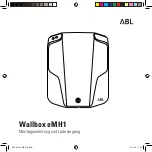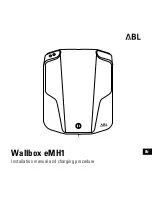
WARNING: Danger, High-voltage! Utility input, AC output and PV array will produce dangerous voltage,
make sure to disconnect the circuit breaker/ fuse before wiring.
6
Determination of installation location: The inverter/charger shall be installed in a place with sufficient air flow through the
dissipation pad of the controller and a minimum clearance of 150 mm from the upper and lower edges of the controller to
ensure natural thermal convection. Please see Figure 2 -1 Mounting
Connect the system in an order of battery load PV array Ground Utility in accordance with Figure
2-2: Wiring Diagram. Disconnect the system in the reverse order.
Grounding
Grounding connection must be made when utility is connected to the inverter/charger. The inverter/charger has
dedicated grounding terminal as shown in Fig. 2-2, the grounding must be reliable, the grounding wire shall be the
thicker wire (wire is not less than 4mm2, the grounding point shall be as close as possible to the inverter/charger, the
grounding wire shall be as short as possible.
AC output, Ground and PV wiring terminal use way:
1. When wiring, do not close the circuit breaker, and it is necessary to use a slotted screwdriver to unscrew the screws
for connecting their corresponding wires.
2. When removing the wirings, first the integrated machine must stop working, and then the screws shall be unscrewed by
using a slotted screwdriver, so as to dismantle their corresponding wires.
Step 3: Wiring
Step 4: Install the terminal protective cover
Figure: 2-2 Wiring Diagram
WARNING: Do not turn on the circuit breaker/ fuse when wiring, and at the same time, ensure that
the wiring of “+”, “-” are correctly connected.
WARNING: A circuit breaker must be installed at the battery end, for selection, refer to Section 2.3
"Wire and Circuit Breaker".
Note: If the inverter/charger is to be used in an area with frequent lightning strikes, it is
recommended to install an external surge arrester at the PV input.
AC Load
Summary of Contents for FBIC5KV4880
Page 18: ...17 NOTES...
Page 19: ...18 NOTES...






































